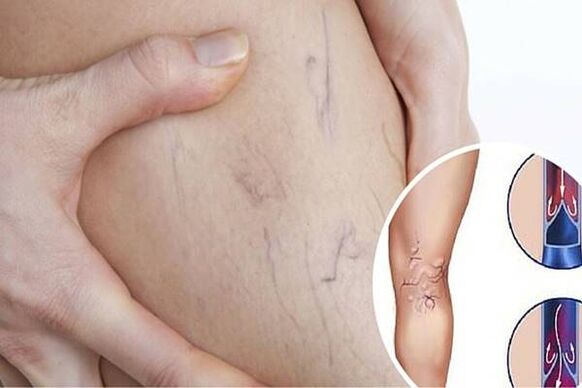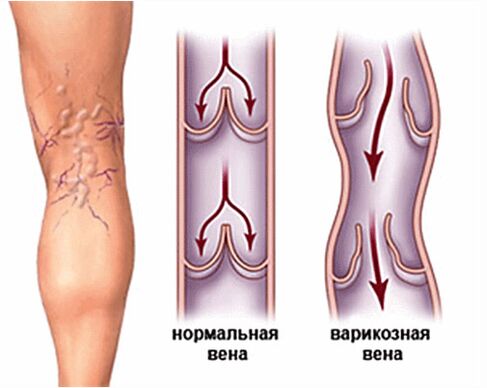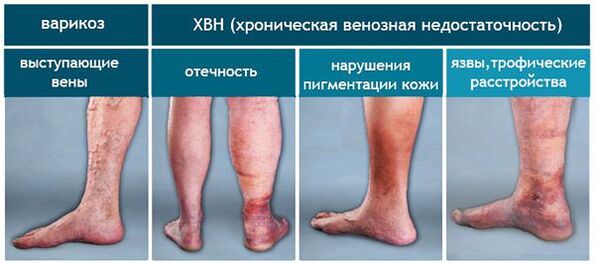According to statistics, about 83% of the population has diseases such as varicose veins in the lower leg.Therefore, it is important to know how varicose veins are in the early stages of seeing.This will identify the disease on time and prevent the development of possible complications.

Varicose veins
The disease, which is accompanied by their development, the destruction of valves can affect various organs of the body.Therefore, this pathological classification is based on its localization.
According to the international classification of the 10th study, the type of disease is distinguished:
- Varicose veins of the blood circulatory system.
- Development of the digestive tract.
- Collection of many pathological clumps in one place.
- Varicosis of lymph nodes and vessels that are not systematized in other parts.
- Lower foot varicose development.
The use of ICD 10 in medical practice allows phlebologists to make the correct diagnosis and differentiation of varicose veins.
On the other hand, varicose veins in the lower leg, depending on the level of the course, are classified into the disease by:
- Ulcerative lesions.
- Progressive inflammation process.
- Ulcers and inflammation.
- Varicose veins or other parts with damage to the skin.
- Lack of vein deformation with ulcer, inflammation.
Taking into account the main places of localization of pathological changes, varicose veins are distinguished:
- Shallow veins.
- Inner veins.
- Reticular.
The extensive classification of varicose veins is determined by various options for the disease.In pathological differentiation, modern doctors use not only ICD-10, but also classification of disease.
In medical practice, this form of varicose veins is distinguished:
- Partial damage to subcutaneous and intradermal blood vessels without reverse flow.
- Segmental defeat with reverse blood flow throughout all veins.
- Extensive defeat with pathological etiological discharge in subcutaneous veins.
- General wounds of veins with abnormal discharge through the inner veins.
Modification of veins and dysfunction in which blood flow can be several types.Only a doctor can properly diagnose and establish a type of varicose development based on complex examination results.

The level of varicose veins
Depending on the process of disease progression, varicose veins have 4 stages of development.Each of them is characterized by certain symptoms.
- In the first stage, the severity of the feet and the pain of the pain are felt.Vascular stars, veins and swelling are visualized.Calf muscle cramps and the manifestation of burning in the foot area.It is characterized by the absence of stagnation in the bloodstream.
- The second stage of varicose veins is accompanied by the oxygen starvation of the vein system.It is characterized by a rapid increase in the size and number of vascular nodes and stars.Such damage has clearly stated the boundaries, which contribute to their brighter manifestation.Perhaps their group in the same area was small behind the area.In this case, the pain and swelling of the soft tissue is enhanced.
- With the third stage of varicose veins, trophic lesions of the lower leg surface are formed.It is characterized by the appearance of the brown area on the skin, which, with the development of the disease, is covered with dry crust and cracks.Against their background, dermatitis is possible.The presence of large edema becomes dangerous.There is a lot of fatigue and pain.
- The fourth degree is a complication of the disease.They can appear in the form of development of inflammation, trophic ulcer on the vein wall.Bleeding is possible with mechanical damage to the seal.This degree is dangerous with the possibility of developing a venous deficiency, which can then be a chronic form.
In the third and fourth stages, the patient begins to experience severe pain with different properties, both in the muscles and throughout the vein.It is extremely rare, there may be nodes rupture, accompanied by insignificant blood loss.Often, such marks are shown at night.If, with varicose veins, hyperthermia and increased weakness, this directly indicates the appearance of complications of the disease.
The varicosis itself is not a dangerous disease that is unacceptable to therapy.However, it should be noted that this pathology is not on its own, and is running fast.The identification of the first stage varicose veins significantly improves the rapid and successful recovery requirements.Varicose veins launched in the fourth stage are dangerous to the body and human life.

The level of varicose veins from the lower leg
Varicose veins are characterized by several stages of pathology.Each one determines the prevalence of the disease and has certain features.There are many classifications of varicose veins, each with its own symptoms and therapy.Most in professional practice, modern doctors use varicose veins classification according to the level of blood flow in vessels.
The following stages of the disease are distinguished:
- It is characterized by the presence of cosmetic manifestations.No symptoms of thrombosis, but when examining the patient, the early stages of varicose veins in the legs are found.Depending on the pathological etiology, the level of varicose vein compensation without proper treatment throughout the year can develop into varicose veins in the second stage.
- The blood vessels are subject to deformation and are clearly shown on the surface of the foot.Varicosis of this stage is accompanied by lower foot pain and swelling.There is a feeling of severity, a sensation of breaking and increasing skin sensitivity.Swelling in the legs increases in the evening, and the next day it disappears.
- The visual signs of the pathologist increased significantly.Venous nets and nodes are no longer in the area, but also in volume.Intensive itching sensation appears.The surface of the skin acquires dark shade, dry and shiny.At this stage, small bleeding occurs, which causes hemosiderin deposition, leading to skin hyperpigmentation in the affected area.
The early stages of varicose veins for each organism run differently.The intensity of the manifestation of the symptoms and the duration of this period is individual and depends on many factors.Therefore, with a small manifestation of pathological signs, you should immediately seek qualified medical treatment.Timely treatment will prevent the development of more serious vein levels.
The early stages of varicose veins in the feet: pathological treatment
With varicose veins, the effectiveness of therapeutic courses directly depends on timely pathological manifestations.Qualified medical care in the early stages of the development of the disease allows you to restore the integrity of the vascular wall and the functioning of the vein.
Early stage varicose veins are performed comprehensively and consist of:
- Complex drug use.For complex effects on the veins, oral intake of tablet preparation is performed.The use of local drugs in the form of ointments and gels has a high therapeutic effect.
- Sclerotherapy.After the procedure, it is compulsory from special compression knitwear.The effectiveness of sclerotherapy describes its use at the compensation stage of varicose veins from the lower leg.
- Ozonotherapy.Referring to the treatment, which acts as one of the complex components of the varicose vein complex in the early stages.Such a procedure improves cell nutrition with oxygen and stimulates blood circulation through the veins.As a result, attach the affected wall from the blood vessels.
Each therapeutic method for varicose veins requires prescription and compulsory medical control.Self against varicose veins is strictly prohibited.
Varicose veins in the lower leg of the early stage are difficult to diagnose independently.Visual information on the Internet contributes to visual refraction with signs of pathological features.


















